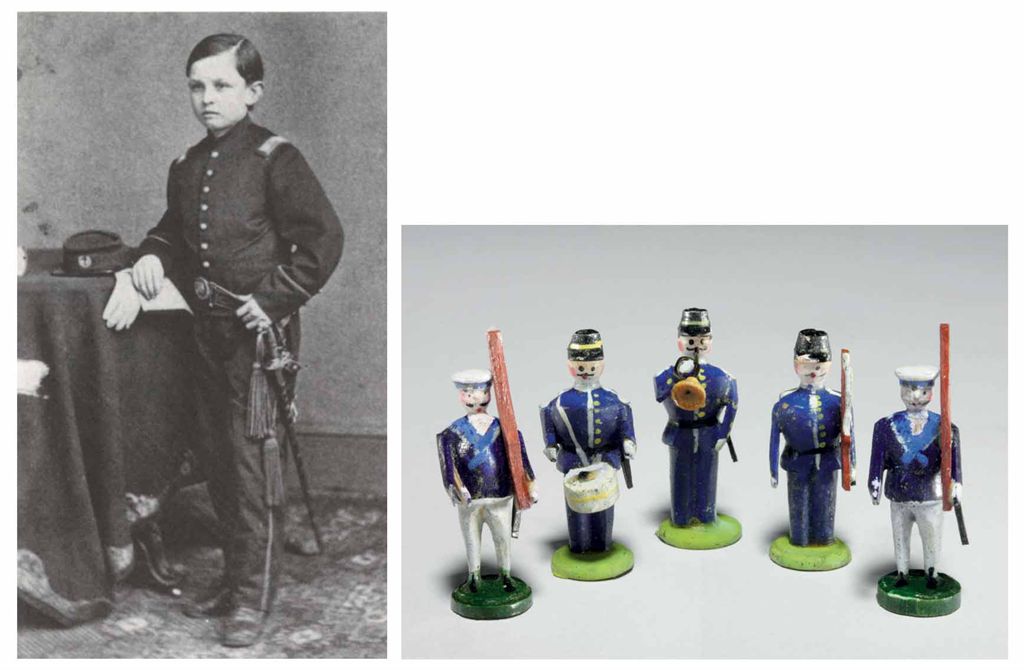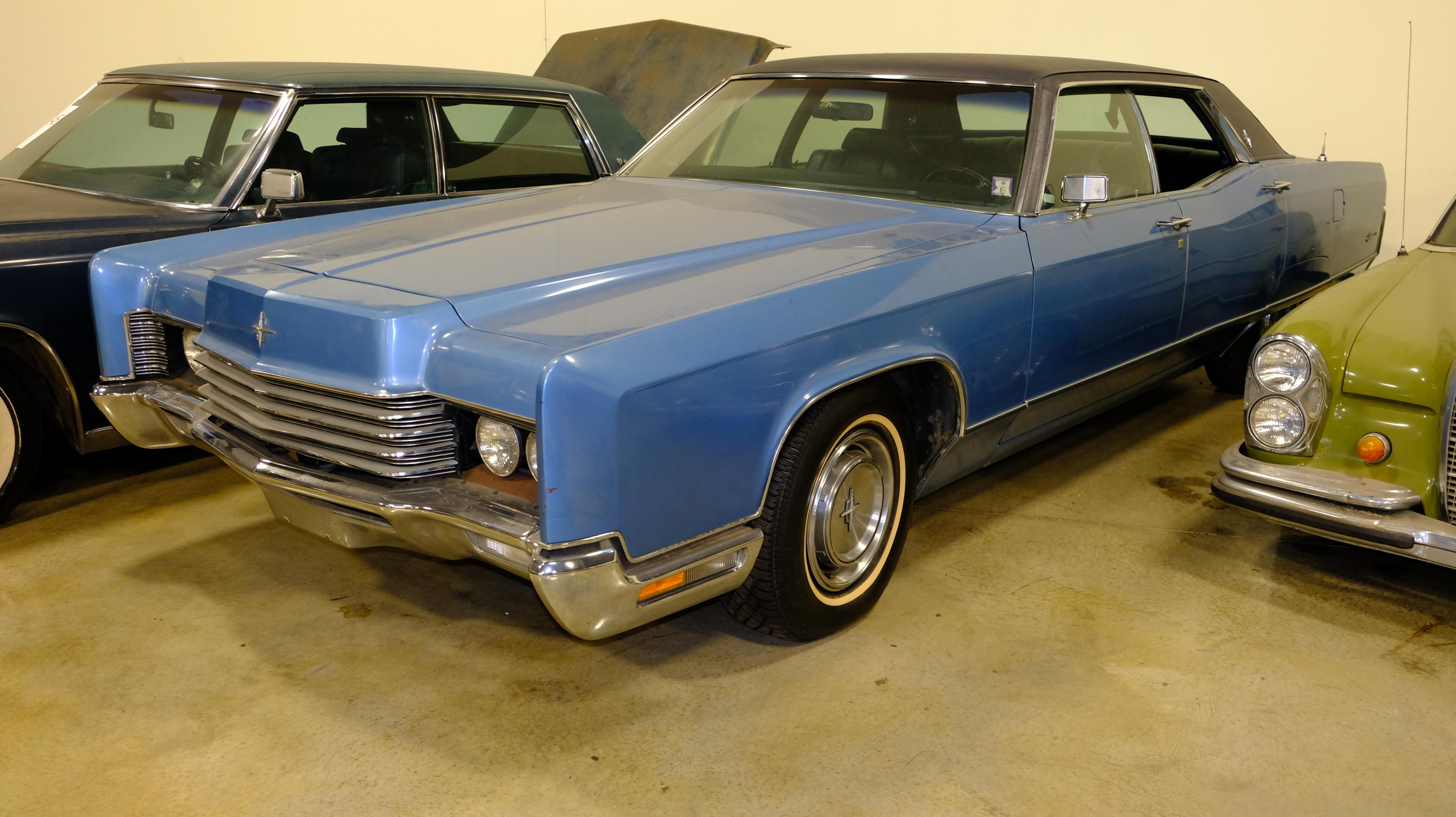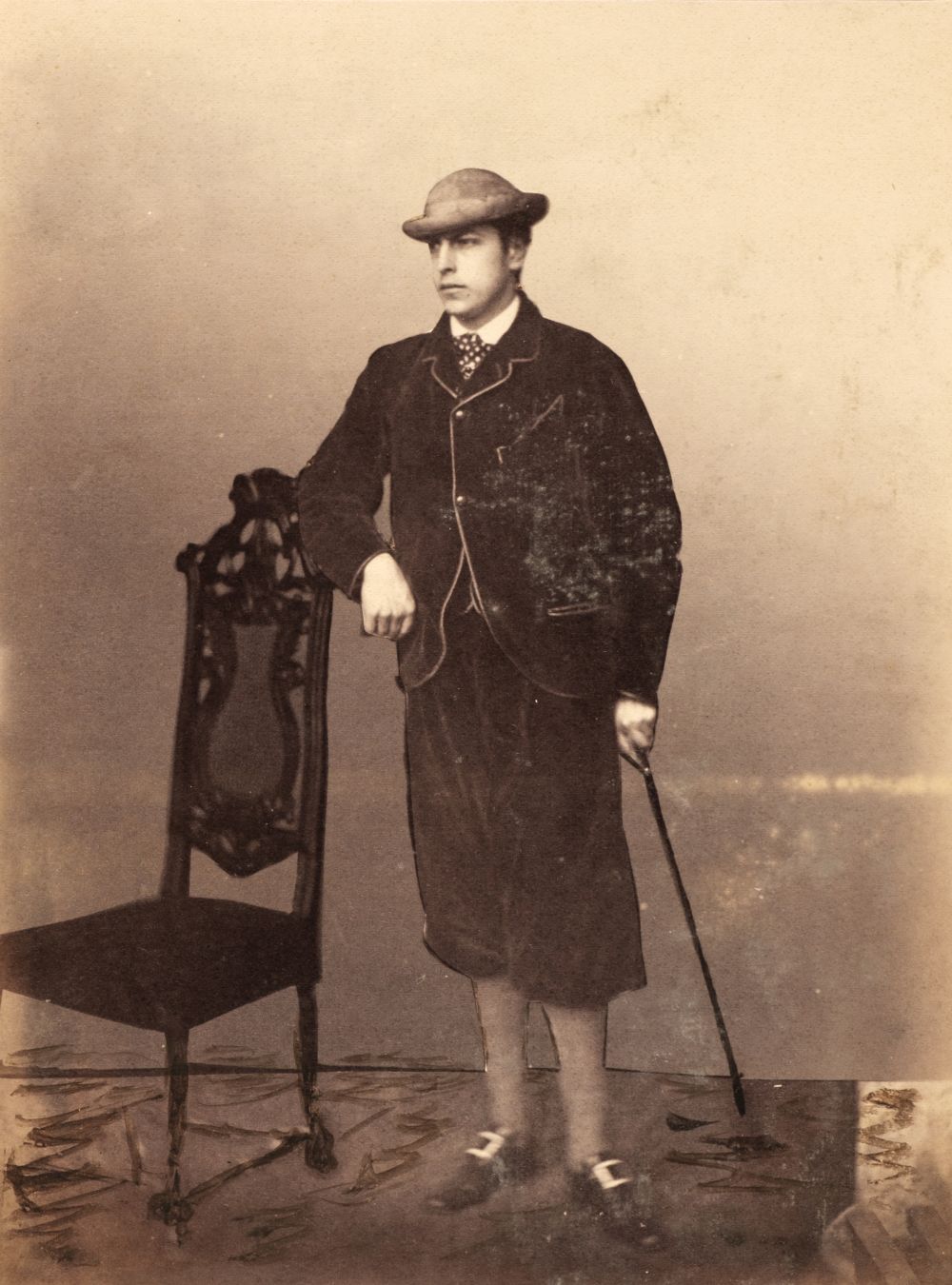LINCOLN -- FAMILY. A group of three carte-de-visite portraits of President Lincoln, Mary Todd Lincoln and son William Wallace Lincoln (1850-1862), by Matthew B. Brady and Alexander Gardner ALL PRESENTED TO CASSIUS MARCELLUS CLAY (1810-1903), who has added inscriptions on the versos of two, the image of Tad Lincoln INSCRIBED IN INK BY MARY LINCOLN in lower blank margin "'Our Willie.'" Three albumen photographs, each mounted, each 4 x 2 3/8 in. approximately, minor soiling. On the verso of the image of the President, Clay has written: "A. Lincoln, sent me from himself by Seward, C.M. Clay"; on the verso of the image of Tad Lincoln, Clay's inscription reads: "given me by Mrs. A. Lincoln 1862. C.M. Clay." With a modern half morocco binder in which they were formerly enclosed. THE FIRST FAMILY: CARTES PRESENTED BY THE LINCOLNS TO CASSIUS M. CLAY An unusual grouping, given by the President and First Lady to a prominent but controversial Republican. The Lincoln carte carries the imprint of Alexander Gardner Washington D.C., on verso. Taken on 9 August 1863, the day before Gardner's new photographic gallery opened for business, it shows the President seated at a table holding a long sheet of paper in one hand, a pair of spectacles in the other (Hamilton and Ostendorf, Lincoln in Photographs , O-72C). The carte of First Lady Mary Lincoln is without imprint, but the photograph was taken by Matthew Brady in 1861 and proved a popular image. It depicts Mrs. Lincoln in the elaborate floral gown she wore to her husband's inauguration, March 1861 (Ostendorf, Photographs of Mary Lincoln , O-10). The third carte-de-visite, showing "Willie" Lincoln, second of the Lincoln's three sons, was probably taken in Springfield in 1860. It is by a considerable margin the rarest of the three cartes. Willie (1850-1862), who was his father's favorite, died in February 1862 at the White House, the victim of an acute malarial infection, and it is very likely that Mary Lincoln was still in mourning at the time she presented this picture to Clay, adding the poignant possessive caption "Our Willie" (Hamilton and Ostendorf, p.304). Cassius Marcellus Clay, to whom these three cartes belonged, had been born in Kentucky as the son of a slave-holder, attended Yale University and later was elected to the state legislature. Strongly influenced by abolitionist William Lloyd Garrison and convinced that slavery was a handicap to the South, he established an anti-slavery paper in Lexington. "Clay's peculiar status as an anti-slavery Southerner, his considerable abilities as a polemical speaker and writer...made him nationally famous" (M. Neely, Abraham Lincoln Encyclopedia . p.58). In 1845 a mob destroyed the offices of the paper and he was forced to relocate to Cincinnati and later, to Louisville. He joined the Republican party at its inception, supporting Fremont and later Lincoln in the Presidential campaigns of 1856 and 1860. Clay was regarded by some as a possible Vice-Presidential running mate for Lincoln, but lost out to Hamlin, a New Englander. After Lincoln's election, he lobbied intensively for a cabinet post, insisting it had been promised him in the 1856 campaign. Clay became a Washington gadfly, dispensing advice to Lincoln and members of the cabinet, particularly Secretary of State William H. Seward, and was at last rewarded with the appointment as minister to Russia. "In 1862," Neely notes, "Lincoln told Orville Hickman Browning that Clay had 'a great deal of conceit and very little sense'" ( Ibid, p. 59.) Clay served only briefly in Russia, returning to the U.S. in the summer of 1862, hopeful that he might serve in a military capacity. He was publicly critical of Lincoln for failing to move against slavery in a more decisive manner. Anxious to keep abreast of public opinion regarding emancipation, Lincoln used Clay as an unofficial go-between with the Kentucky Unionists. In 1863 the restless Clay returned to Russia to take up his post as minister, this
LINCOLN -- FAMILY. A group of three carte-de-visite portraits of President Lincoln, Mary Todd Lincoln and son William Wallace Lincoln (1850-1862), by Matthew B. Brady and Alexander Gardner ALL PRESENTED TO CASSIUS MARCELLUS CLAY (1810-1903), who has added inscriptions on the versos of two, the image of Tad Lincoln INSCRIBED IN INK BY MARY LINCOLN in lower blank margin "'Our Willie.'" Three albumen photographs, each mounted, each 4 x 2 3/8 in. approximately, minor soiling. On the verso of the image of the President, Clay has written: "A. Lincoln, sent me from himself by Seward, C.M. Clay"; on the verso of the image of Tad Lincoln, Clay's inscription reads: "given me by Mrs. A. Lincoln 1862. C.M. Clay." With a modern half morocco binder in which they were formerly enclosed. THE FIRST FAMILY: CARTES PRESENTED BY THE LINCOLNS TO CASSIUS M. CLAY An unusual grouping, given by the President and First Lady to a prominent but controversial Republican. The Lincoln carte carries the imprint of Alexander Gardner Washington D.C., on verso. Taken on 9 August 1863, the day before Gardner's new photographic gallery opened for business, it shows the President seated at a table holding a long sheet of paper in one hand, a pair of spectacles in the other (Hamilton and Ostendorf, Lincoln in Photographs , O-72C). The carte of First Lady Mary Lincoln is without imprint, but the photograph was taken by Matthew Brady in 1861 and proved a popular image. It depicts Mrs. Lincoln in the elaborate floral gown she wore to her husband's inauguration, March 1861 (Ostendorf, Photographs of Mary Lincoln , O-10). The third carte-de-visite, showing "Willie" Lincoln, second of the Lincoln's three sons, was probably taken in Springfield in 1860. It is by a considerable margin the rarest of the three cartes. Willie (1850-1862), who was his father's favorite, died in February 1862 at the White House, the victim of an acute malarial infection, and it is very likely that Mary Lincoln was still in mourning at the time she presented this picture to Clay, adding the poignant possessive caption "Our Willie" (Hamilton and Ostendorf, p.304). Cassius Marcellus Clay, to whom these three cartes belonged, had been born in Kentucky as the son of a slave-holder, attended Yale University and later was elected to the state legislature. Strongly influenced by abolitionist William Lloyd Garrison and convinced that slavery was a handicap to the South, he established an anti-slavery paper in Lexington. "Clay's peculiar status as an anti-slavery Southerner, his considerable abilities as a polemical speaker and writer...made him nationally famous" (M. Neely, Abraham Lincoln Encyclopedia . p.58). In 1845 a mob destroyed the offices of the paper and he was forced to relocate to Cincinnati and later, to Louisville. He joined the Republican party at its inception, supporting Fremont and later Lincoln in the Presidential campaigns of 1856 and 1860. Clay was regarded by some as a possible Vice-Presidential running mate for Lincoln, but lost out to Hamlin, a New Englander. After Lincoln's election, he lobbied intensively for a cabinet post, insisting it had been promised him in the 1856 campaign. Clay became a Washington gadfly, dispensing advice to Lincoln and members of the cabinet, particularly Secretary of State William H. Seward, and was at last rewarded with the appointment as minister to Russia. "In 1862," Neely notes, "Lincoln told Orville Hickman Browning that Clay had 'a great deal of conceit and very little sense'" ( Ibid, p. 59.) Clay served only briefly in Russia, returning to the U.S. in the summer of 1862, hopeful that he might serve in a military capacity. He was publicly critical of Lincoln for failing to move against slavery in a more decisive manner. Anxious to keep abreast of public opinion regarding emancipation, Lincoln used Clay as an unofficial go-between with the Kentucky Unionists. In 1863 the restless Clay returned to Russia to take up his post as minister, this















Testen Sie LotSearch und seine Premium-Features 7 Tage - ohne Kosten!
Lassen Sie sich automatisch über neue Objekte in kommenden Auktionen benachrichtigen.
Suchauftrag anlegen